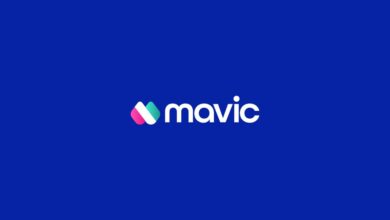Elevating Website Design with Laravel: A Comprehensive Guide
In the fast-paced world of web development, creating visually stunning and functionally robust websites is crucial for businesses to thrive online. With the abundance of frameworks available, Laravel emerges as a powerful tool for developers seeking to craft sophisticated and efficient web solutions. In this guide, we delve into the realm of Laravel website design, exploring its features, advantages, and best practices to help you elevate your web development endeavors.
Understanding Laravel:
Laravel stands out as an open-source PHP framework renowned for its expressive syntax and rich feature set. Embracing the Model-View-Controller (MVC) architectural pattern, Laravel fosters a clean and organized code structure, facilitating scalability and maintainability.
One of Laravel’s hallmark features is its modular packaging system powered by Composer, enabling seamless integration of third-party libraries and extensions. Additionally, Laravel offers built-in functionalities such as routing, authentication, caching, and session management, streamlining the development process and enhancing productivity.
Benefits of Using Laravel for Website Design:
- Eloquent ORM: Laravel’s Eloquent ORM simplifies database interactions by providing an intuitive and expressive syntax for defining database models and relationships. This abstraction layer streamlines database operations, making data manipulation and retrieval seamless.
- Blade Templating Engine: Blade, Laravel’s templating engine, empowers developers to create dynamic and reusable view templates effortlessly. With features like template inheritance and control structures, Blade facilitates the creation of elegant and maintainable user interfaces.
- Artisan Command Line Interface: Laravel’s Artisan command-line interface automates repetitive tasks, such as database migrations and code generation, enhancing developer productivity and efficiency.
- Built-in Authentication and Authorization: Laravel simplifies user authentication and authorization with its built-in authentication system. Developers can implement features like user registration, login, and access control effortlessly, saving time and effort during development.
- Testing and Debugging: Laravel provides robust support for automated testing with PHPUnit, enabling developers to write unit tests for their applications. Additionally, Laravel’s comprehensive error handling and logging mechanisms facilitate debugging and troubleshooting, ensuring smooth operation of web applications.
- Security Features: Laravel prioritizes security with features like CSRF protection, input validation, and encryption out of the box. By adhering to Laravel’s security best practices, developers can safeguard their websites against common vulnerabilities and ensure data integrity and confidentiality.
Best Practices for Laravel Website Design:
- Follow MVC Architecture: Adhering to the MVC architectural pattern promotes code organization and maintainability. Keep business logic in models, user interface in views, and request handling in controllers for clarity and separation of concerns.
- Optimize Database Queries: Utilize Laravel’s Eloquent ORM efficiently by optimizing database queries to minimize overhead and improve performance. Employ techniques like eager loading, query scopes, and indexing to streamline data retrieval.
- Utilize Blade Layouts and Components: Leverage Blade layouts and components to create modular and reusable user interface elements. Break down complex views into smaller components for improved code organization and reusability.
- Implement Caching: Take advantage of Laravel’s caching mechanisms to reduce database load and enhance application performance. Cache frequently accessed data, query results, and rendered views to minimize response times.
- Secure Authentication: Implement secure authentication practices, such as strong password hashing and session management, to protect user accounts from unauthorized access and data breaches.
- Handle Errors Gracefully: Implement error handling and logging to gracefully handle exceptions and errors encountered during application execution. Provide informative error messages and log detailed stack traces for effective troubleshooting.
- Optimize Asset Delivery: Minimize page load times by optimizing asset delivery, including JavaScript and CSS files. Utilize Laravel Mix or asset compilation tools to concatenate, minify, and version assets for efficient loading and caching.
- Monitor Performance: Continuously monitor application performance using tools like Laravel Telescope or external monitoring services. Identify performance bottlenecks, optimize critical paths, and scale infrastructure as needed to ensure optimal user experience.
Conclusion:
Laravel empowers developers to design and build exceptional websites with ease, thanks to its expressive syntax, robust feature set, and thriving ecosystem. By embracing Laravel’s capabilities and adhering to best practices, developers can create scalable, secure, and high-performance web applications that captivate audiences and drive business growth.
Whether you’re a seasoned Laravel developer or embarking on your journey with the framework, mastering Laravel website design opens up endless possibilities for creating impactful digital experiences. Embrace Laravel’s elegance and power to unlock your full potential as a web developer and craft websites that inspire and engage users worldwide.


